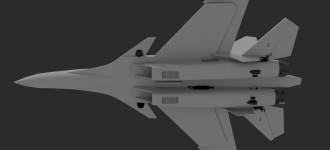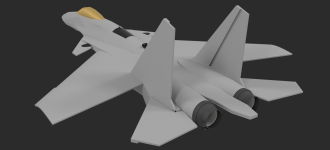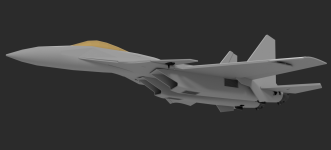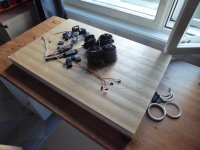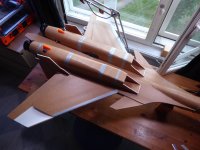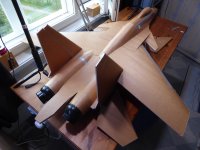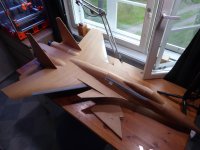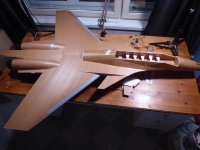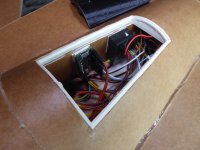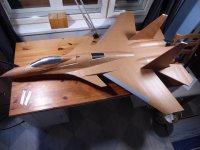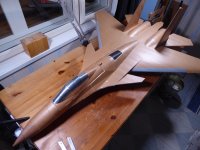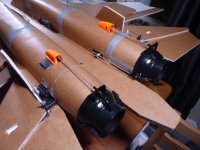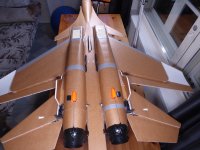Hello again, sorry for the long break, I was traveling a whole month. I got back a couple of days ago and will finish this project now. Since the last post, I have covered up the plane, built the nose, canopy and vertical stabilizers. Horizontal stabilizers are done as well but not attached just yet. Speaking of h-stab, I've improved (I believe) it too, it no longer needs any brass bushings or shaft collars, just a hex socket m4 screw which will be screwed into the undersized hole of the printed stab/servo mount. Things left to do is some wiring, push rods, maybe some printed canopy locks this time?, and some small details like 3d printed cheat intakes.
For the paint job/livery, I don't know what to do, so you go ahead and give me suggestions. It can as well be an imaginary livery, it just must not be too complicated or labor intensive.
I put it on the scale today and with 4x 4 cell 1400mah batteries the weight seems to be a bit over 2000 grams, which is about as much as the su-27, but including one more battery and thrust vectoring setup. Definitely great results for my attempt to reduce the weight, very pleased with it. But obviously it does come with a cost, namely reduced rigidity of the airframe. There is definitely some flex to the fuselage, but whether or not that's bad will be seen in practice once it flies/crashes/breaks midair lol. The reason for using now 4 batteries instead of 3 is mainly because my batteries are getting a bit old and I kinda feel bad for pulling 40 amps per battery, equivalent of about 28c battery load. Maybe I will try it, just don't want to wreck my batteries.
The weather is currently not so great, but according to the forecast should get better next weekend, so I'm aiming to maiden it then. And now, as you wish, all pictures I got since last update, will do more once it's maiden ready.

